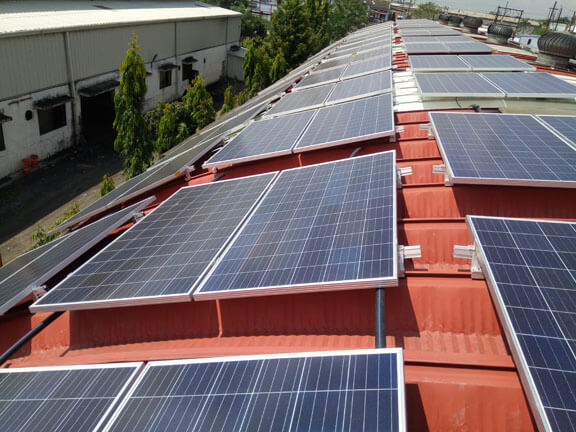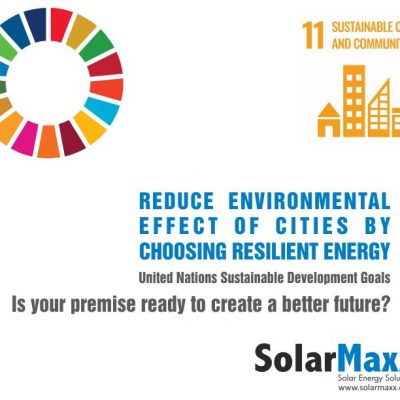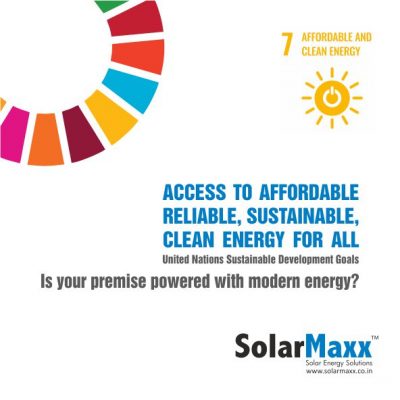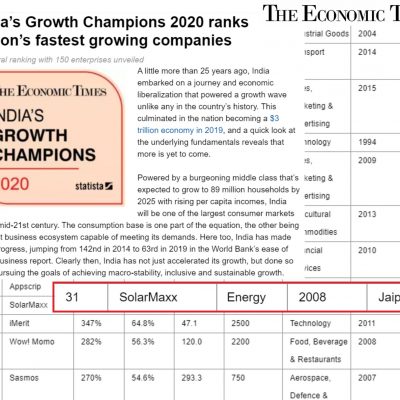Rooftop Solar the future
Rooftop solar is the future and has a huge growth potential especially when in the long run utility scale power plants are going to face land shortage and transmission connectivity challenges. India saw an installation of approx 1500 MW of solar rooftop in the half year ended September 2018 taking the total capacity in the solar rooftop segment to approx 3.8 GW by the end of 2018, according to sources. The country’s total solar installed capacity has reached to Approx 28000 MW till 31st March 2019.
Installing a rooftop system at a residential or commercial terrace space has multiple economic and environmental benefits. Not only is it an effective way to reduce carbon footprint and electricity costs, it comes with a huge bundle of savings for the future.
Why is Solar Rooftop the need of the hour in India?
The government aims for a 40 GW target of solar rooftop projects by 2022. But still 60 percent of the power is still generated by thermal projects. India’s dependence on thermal power will take time to dilute till most home owners choose to power their rooftop spaces with solar and the grid connections to the rural areas get extended and powered with solar projects.
With lack of space, new utility scale power plants may gradually fade and the market will be dominated for the manufacturers providing services for rooftop projects because they need no additional land space. Further with rooftop solar the site of power generation and consumption is the same hence saving on network losses or additional expenditures required for development and modernization of the present power grids.
A 1 kW solar Power System
Normally, a solar rooftop system per 1 kW can be installed in a 10 sq meter area with a one-time investment of around Rs. 40,000 – 60,000 depending on the total size of the system. Holding a life of over two decades a 1 kWp of Solar Panels will generate around 120 units of electricity a month and around 1,200–1,500 units a year, depending on its location, orientation and quality of material used.
Solar Mounting Structure
A solar mounting structure is made of metal channels and is fastened to the terrace or shed. The best direction for us in India to place the solar panels is south facing to receive maximum sun light. Once a structure has been mounted, the PV modules are fixed to it following the balance of the system that is the wiring, inverter, meters, etc.
Type of Roof
Now the mounting structure choice depends on the type of rooftop:
-Flat Roof
A flat roof is normally sorted with a few penetrations of concrete block weights and position a 5 to 15 degree PV panel tilt depending on the resistance of the roof and to prevent wind lift.
-Slanted Roof
While on a pitched / slanted roof, rails are attached to the roof with shaped profiles and the panels are clamped over these rails. For a typical industrial shed roof, the PV modules are mounted on the sloping side of the sheds with structures similar to those of pitched roofs but fixed to the metal sheet directly without the need of an additional frame.
-Building Integrated PV Solutions
With improved technology even cosmetic curved rooftops can be turned solar and PV modules can even replace conventional building material in certain parts of a building with building integrated PV solutions.
Orientation and Inclination
The power generated by a rooftop solar system is influenced by some key factors such as the position, orientation and inclination of the roof. It is important to keep in mind that there is no shadowing on the solar array for optimal output. Expert knowledge in fixing the right orientation and inclination of the PV array is crucial.
Cost Effective Investment
Solar rooftops are very cost effective. They are a one-time investment that continue to serve both nature and the society for decades. A solar power system proves to be less expensive as compared to any of the conventional power sources as diesel generators or even grid electricity. People who switch to solar energy experience a huge cut in electricity bills, hence saving the users a lot of the hard earned money.
Our Patrons
We have covered many housing societies along with independent domestic projects across north India. The new generation is finding ways to protect the environment and “Go Green”. They are creating a climate for change. If the living place is such that it helps in reducing carbon footprint and also save money it acts as an added advantage for people to switch to solar.
Several known brands and industries have covered their sheds/roofs into a power house with SolarMaxx Solar roof-top systems. Some of our industrial solar rooftop clients are Super Gas, Jaipur; Surya Namak, Nawa; Vogue Export, Bindayaka; J C Home Tex, Sitapura; Usha Precision, Macheda; Autopal, Sarna Dungar; Vendanta Group, Reengus; Rajesh Motors, Udaipur, Alwar & Kota; Rajasthan Patrika, Rajasthan & Madhya Pradesh – every single project be it small or big has helped save money and avail tax benefits to the companies and savings to the individuals. Where the huge sheds of industries are normally left underutilized, they are now being used as a solar power house generating electricity and bringing savings in various forms to the enterprise.
If you too have a empty roof top space at your home or work place then simply click here and our experts will guide you further.





